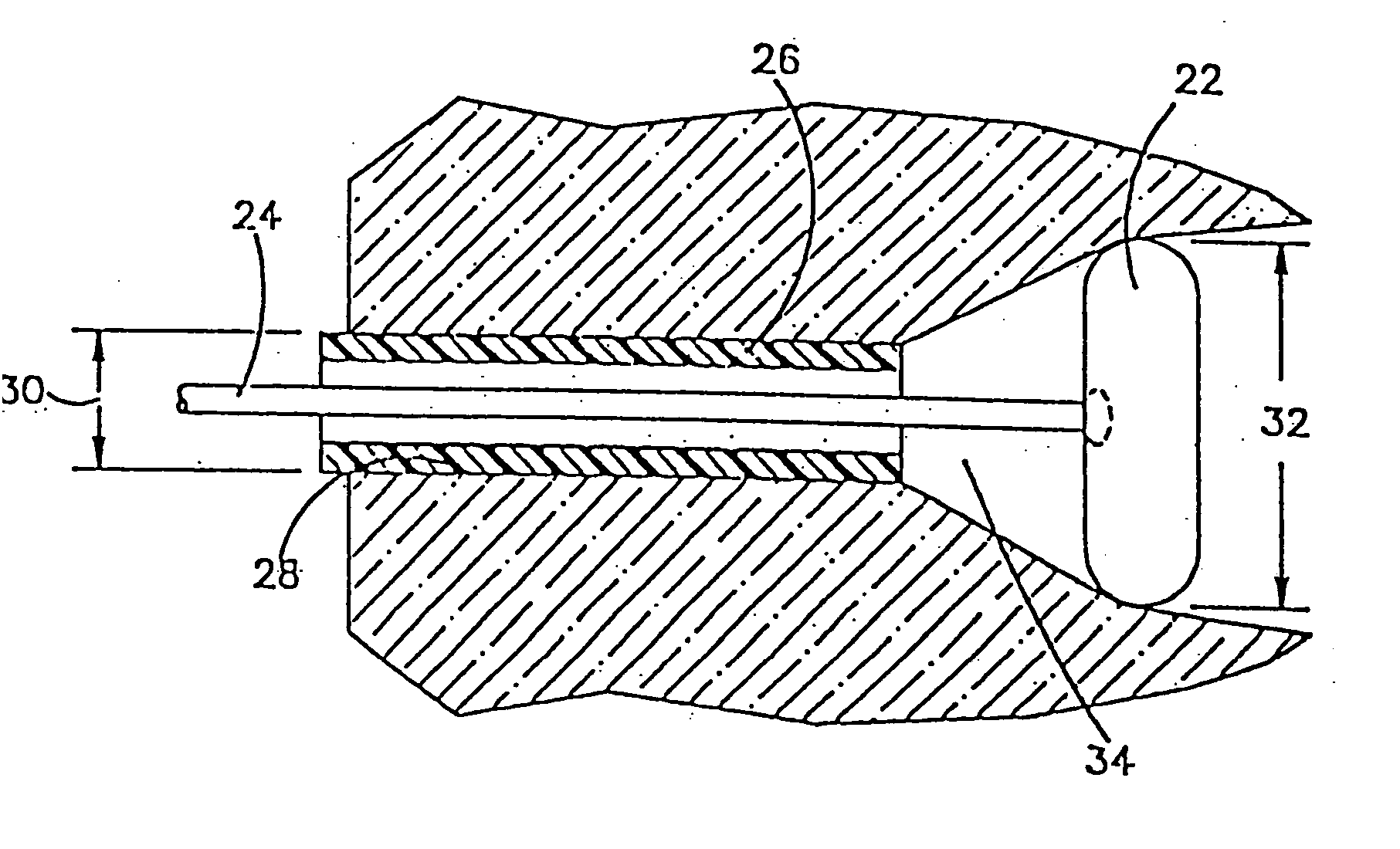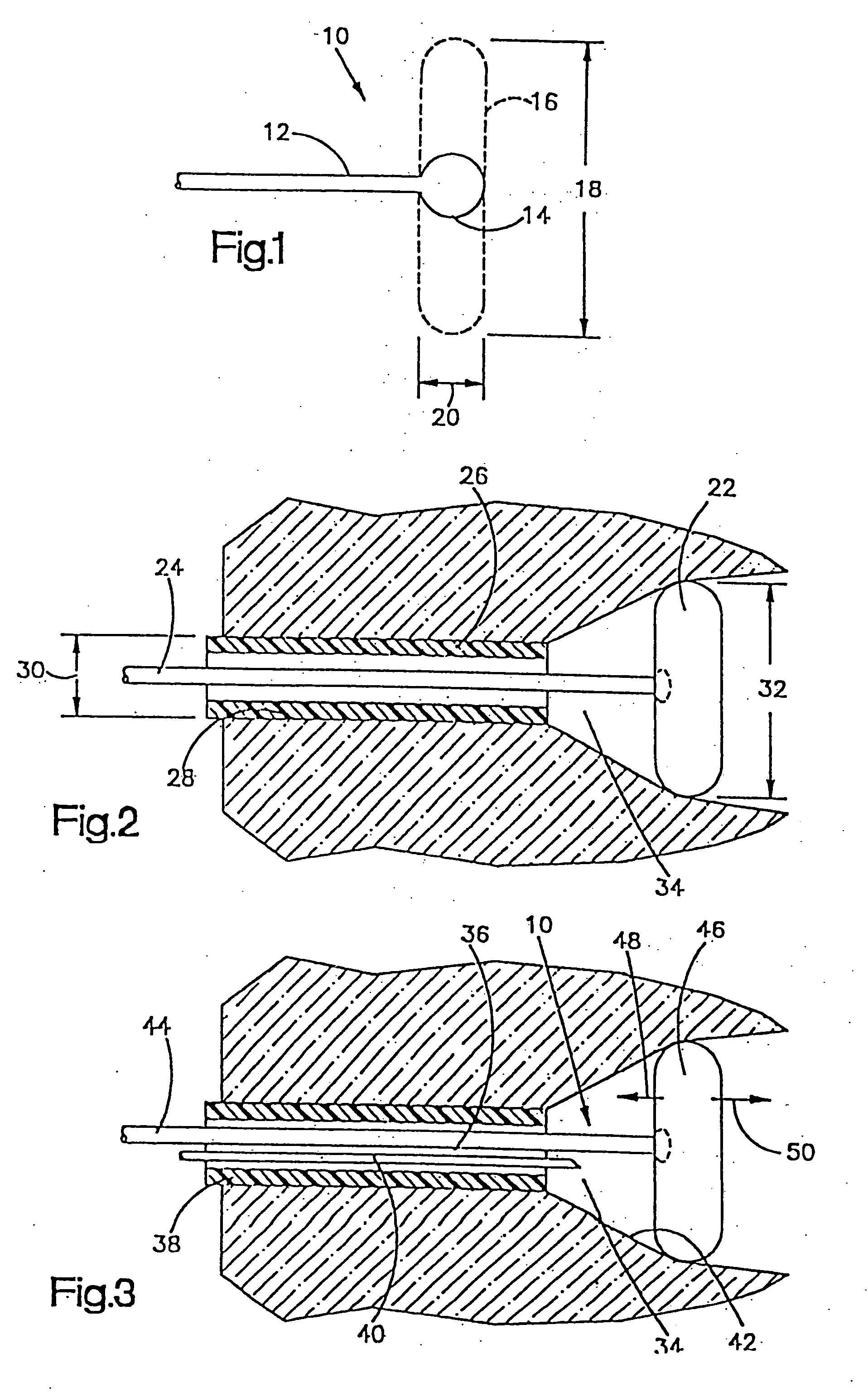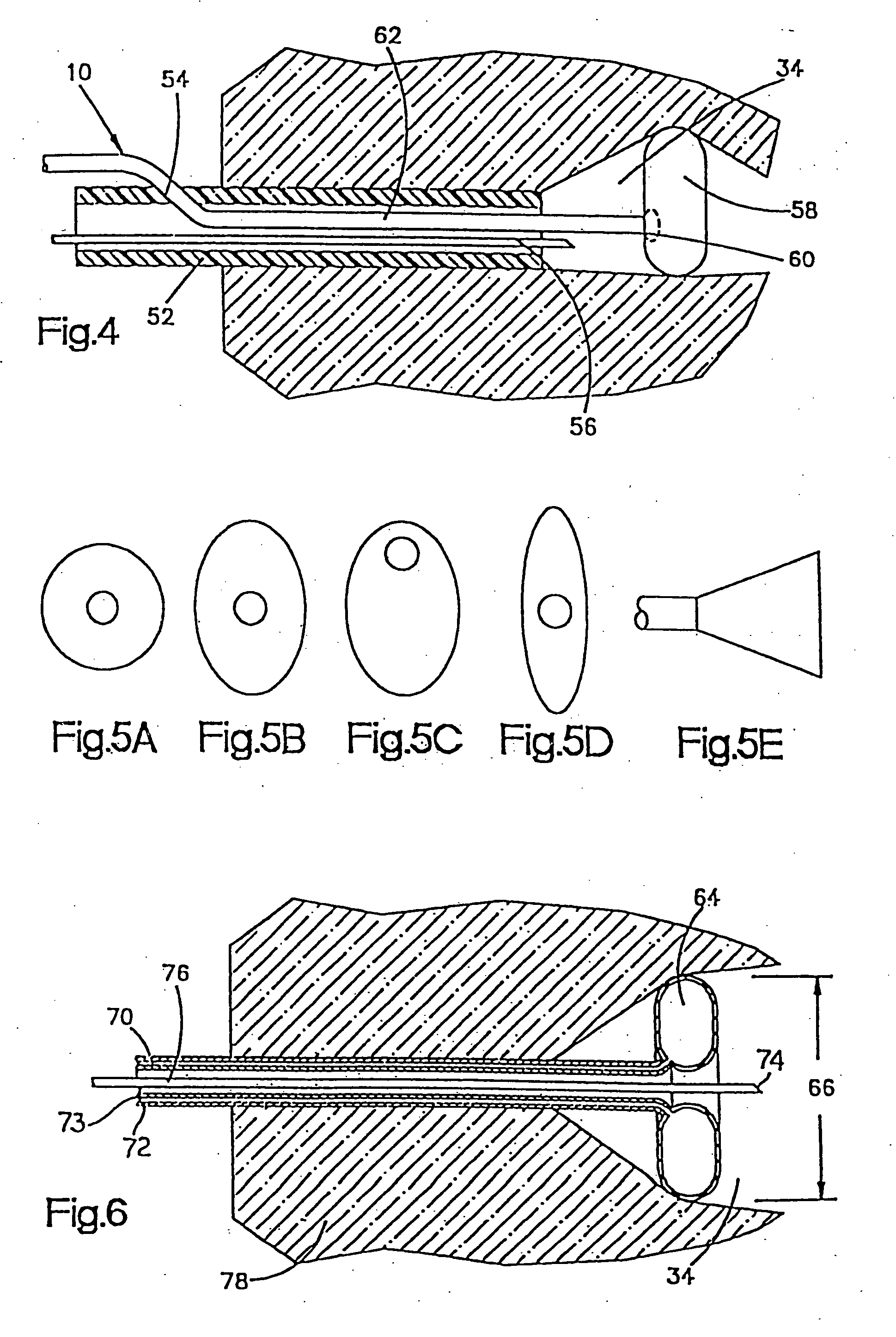Fluid operated retractors
a technology of retractors and occlusion devices, which is applied in the field of tissue retractors, can solve the problems of inability to monitor the pressure being applied to the body tissues, necrosis or tissue death, and edema or swollen tissue, and achieve the effects of less damage to the joint, increased visualization and/or working space, and ease of access through the join
- Summary
- Abstract
- Description
- Claims
- Application Information
AI Technical Summary
Benefits of technology
Problems solved by technology
Method used
Image
Examples
Embodiment Construction
[0056] FIG. 1 illustrates schematically a retractor 10 in accordance with the present invention. The retractor 10 includes a fluid supply structure 12 and an expandable balloon or bladder 14 located at or near the end of the structure 12. The bladder is expandable, under the force of fluid under pressure, from an unexpanded condition as indicated in full lines at 14 to an expanded condition as shown in broken lines at 16. In the expanded condition, the transverse dimension 18 of the bladder 14 is significantly greater than its transverse dimension before expansion, the longitudinal dimension 20. Also, in the expanded condition, the transverse dimension 18 of the bladder 14 is significantly greater than its longitudinal dimension 20.
[0057] When the bladder of the retractor is expanded inside the body, it retracts tissue. As seen in FIG. 2, a bladder 22 is mounted on the end of a separate shaft 24 within a cannula or scope 26. The cannula or scope 26 has been inserted into the body th...
PUM
 Login to View More
Login to View More Abstract
Description
Claims
Application Information
 Login to View More
Login to View More - R&D
- Intellectual Property
- Life Sciences
- Materials
- Tech Scout
- Unparalleled Data Quality
- Higher Quality Content
- 60% Fewer Hallucinations
Browse by: Latest US Patents, China's latest patents, Technical Efficacy Thesaurus, Application Domain, Technology Topic, Popular Technical Reports.
© 2025 PatSnap. All rights reserved.Legal|Privacy policy|Modern Slavery Act Transparency Statement|Sitemap|About US| Contact US: help@patsnap.com



